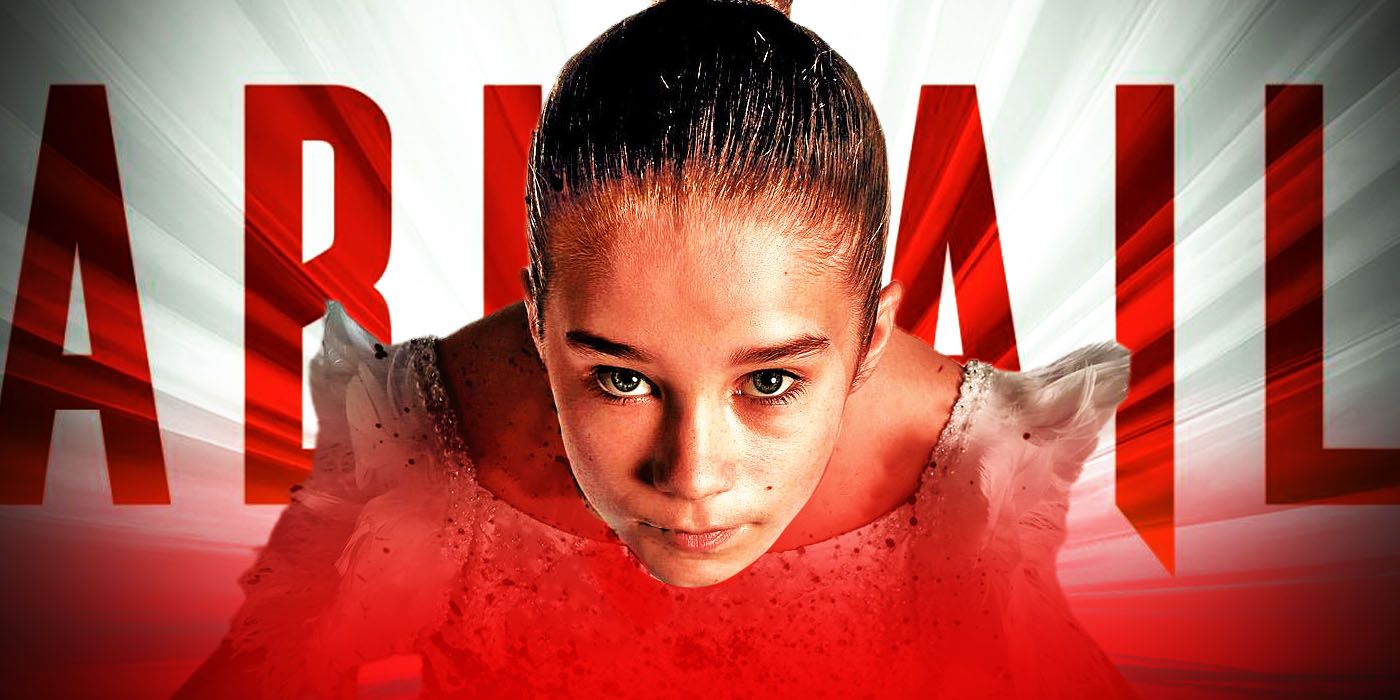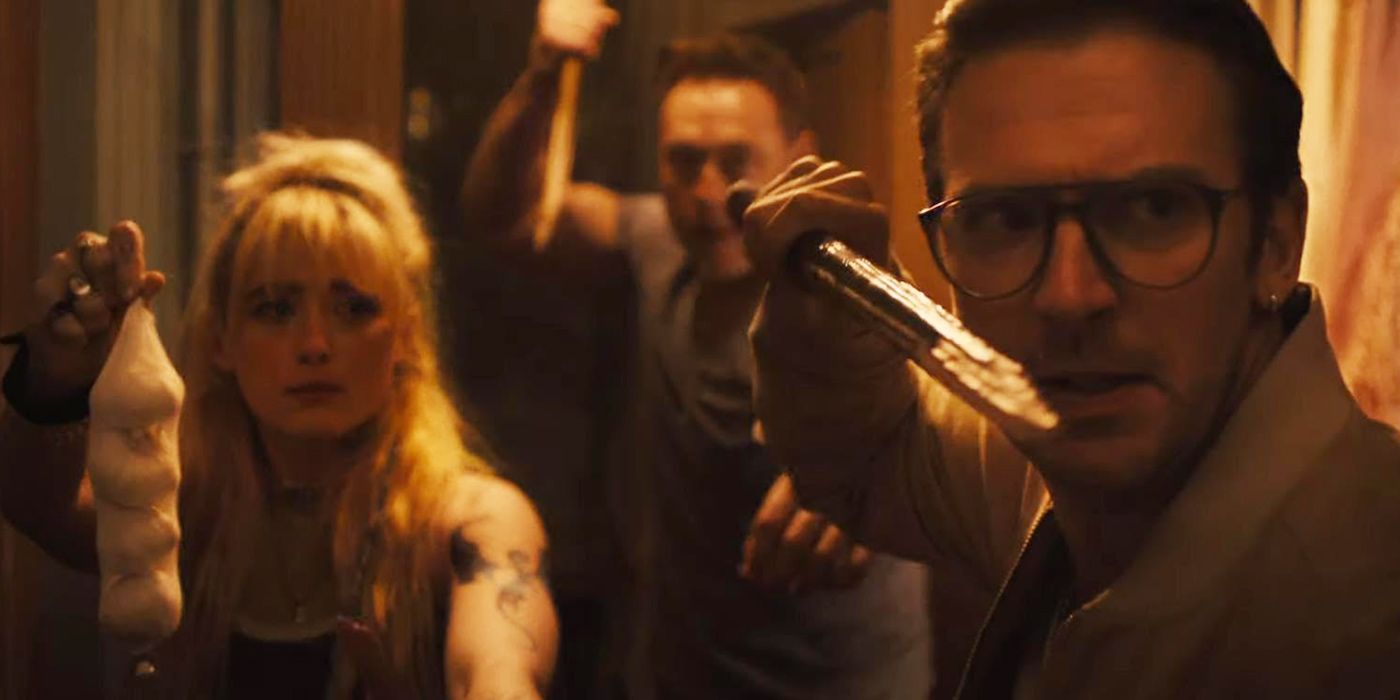Universal Pictures’ Abigail is portrayed as a gory action-horror but the marketing didn’t showcase the true heartbeat of the vampire movie.

When it comes to vampire horror movies, most of the marketing portrays very vicious storylines. A lot has to do with the essence of the folklore involving these creatures of the night. Bram Stoker’s Dracula, for example, focused on the old-school English version of the vampire, mixing horror with romance and drama. Then there is The Last Voyage of the Demeter, which adopted the approach of the Alien movies, with Dracula’s feral form hunting humans who were transporting his coffin from Transylvania to London.
It does feel, like no matter what, studios want to invite audiences in with the promise of gore and more cerebral tales of his species — something that will continue with Robert Eggers’ Nosferatu. This is why fans weren’t surprised to see Universal Pictures portraying Abigail as a bloodbath, with a young ballerina vampire munching down on kidnappers. To that point, it felt like maybe it was an attempt at nodding to the failed Dark Universe again and the idea that maybe it could be revamped. However, while Abigail does have extreme violence, the marketing made a mistake by not focusing on its biggest strength.
Abigail Has a Lot More Comedy to It




The trailers are deceptive in that they don’t present Abigail as having a lot more comedy to it. The first half of the film focuses on Melissa Barrera’s Joey, Frank (played by Godzilla x Kong’s Dan Stevens), and the rest of the group wondering what’s picking them off in a mansion. Something is clearly hunting them, but they just couldn’t foresee this petite ballerina going free and stalking them as a meal.
This direction takes the lead from movies like Jaws, playing on jump scares and the creature in the shadows being an apex predator. However, the second half of Abigail begins unwinding a new energy in terms of humor. It feels a lot like what the directors, Matt Bettinelli-Olpin and Tyler Gillett, did with Scream V and VI. Those movies had Ghostface attacking a new era of victims. But the heroes had more sass and jokes.
It helped balance the plot, differentiating it from the older Scream movies that had comedy, but leaned more into the slasher vibe. In Abigail, the heroes crack puns and poke fun at each other after realizing that they’re prey. Abigail also insults them in a cheeky manner. It’s part of her arrogance, while showcasing that even though she has lived for centuries, she is still a little girl, at least mentally. It’s evident in how she decapitates Angus Cloud’s Dean and dances to classical music with his headless corpse.
She wants to make it fun and games, not something boring. This is why she dances as she chases victims down. It might be silly, slapstick and cheesy, but many early-era Dracula movies did have quirky scenes to elicit laughs. It made him a master manipulator who loved being atop the food chain. Here, Abigail wants to show she can be the same, toying gleefully and smiling as she plays with her food. It lightens up the film and subverts expectations, giving the heroes more character, and Abigail being something more than just a dour personality.
Abigail Fits Into a Vampire Niche Market

For something bloodier, fans could look towards the From Dusk Till Dawn movie and TV show. Abigail is similar to What We Do in the Shadows but with more graphic scenes. This plays up the charm of the vampire mythos, specifically with Abigail appearing as a victim, herself. She has been neglected by her father (who is implied to be Dracula), so she wants to kill his enemies and prove she is useful.
When the kidnappers find out, they can’t believe they have been duped. This kickstarts all the jokes, while still maintaining that artsy vampire flair. It’s only so much that audiences can take with straight-up horrors like 30 Days of Night, and Daybreakers. The plight of townspeople being hunted, vampires taking over the world by building an empire, or humanity searching for a vampire cure have all been overdone.
Abigail pranking her would-be abductors and making them her meal feels fresh, unique and original. More of this innovation is needed with vampire stories. This is what the trailers should have focused on, rather than making Abigail feel by-the-numbers. That could discourage fans who think it’d be another rudimentary, run-of-the-mill series of maulings.
Abigail Still Maintains Its Depiction of Graphic Violence and Gore

The Abigail directors don’t compromise and hold back on the murderous scenes, but they also don’t overdo it. Dean’s beheading, for example, isn’t overtly seen as he’s dragged off into the dark. But his head and corpse are then shown with the kidnappers, front and center. Later, when Sammy gets mind-controlled by Abigail, she feasts on Peter in another bloody sequence.
When Sammy, Lambert (played by Breaking Bad’s Giancarlo Esposito) and Frank all get staked in Abigail’s ending, they blow up with huge amounts of blood. The directors love excessive blood in all their films, playing up the idea of making the kills as ridiculous as can be. This pleases two sets of fans: those wanting epic deaths and those wanting something a bit more subtle. When Rickles is killed, for example, he’s just seen in a corridor with his face mangled. There isn’t a loud fight or anything too bombastic. There is spectacle in quiet deaths, after all.
When all’s said and done, Abigail straddles the line, having just enough blood and gore to match its laughs. The dialogue and narrative might be clunky, but balancing both themes and creating an action-comedy is very deftly done. This sort of melding of narrative styles could make for an interesting Abigail sequel. That is, if the studios see merit in it through box office receipts. Unfortunately, the marketing didn’t play up its greatest strength, which is the comedy.
As the finale proved, Dracula’s (played by Matthew Goode) quaint, kooky presence as he reconciles with his daughter and throws verbal barbs warrants a lot more exploration of this dark-comedy universe. Ultimately, these monsters (both human and vampire) are flawed and vulnerable, deflecting enemies and distracting themselves with jokes that don’t take away from the violence on display. But most of all, it doesn’t detract from how human they are — a big plus that helps build emotional attachment to viewers.
Abigail is now playing in theaters.

